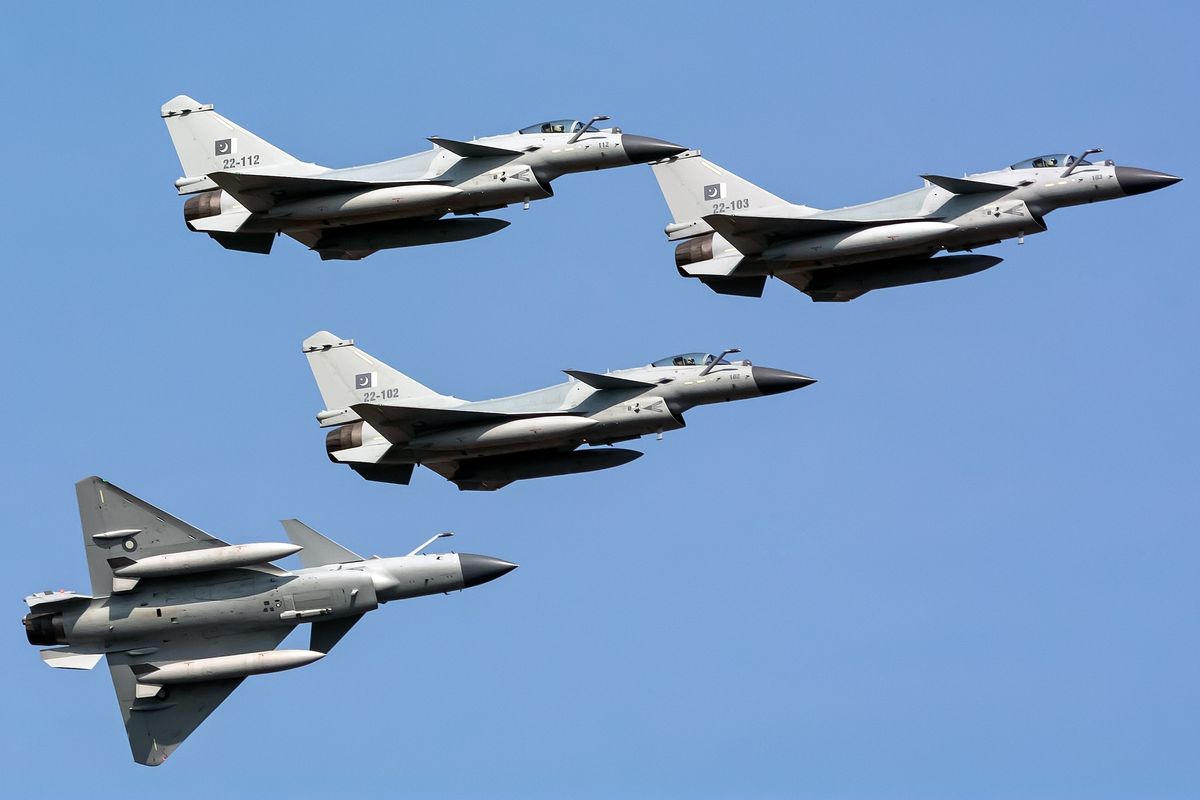How Pakistan's 'ABC' combat system outsmarted the Indian Air Force
Three-phase 'locked by A, launched by B, guided by C' system coordinates radars, jets, and warning aircraft

Pakistani Air Force J-10C fighter jets fly in formation during a Pakistan Day Parade in Islamabad, Pakistan, March 23, 2023.
Shutterstock
Integration allows beyond-visual-range engagement
India struggles with standardizing communications
Recent hostilities add to long-standing tensions
Pakistan's military successfully countered India's larger air force last week using an innovative data-sharing system that coordinates ground radars, fighter jets, and airborne warning aircraft, China Space News reported Wednesday.
The system, described as "locked by A, launched by B, guided by C," allowed Pakistan to defeat Indian aircraft while keeping its own jets at safe distances.
A top Chinese-made Pakistani fighter shot down at least two Indian military aircraft on Wednesday, two U.S. officials told Reuters, marking a major milestone for Beijing's advanced fighter jet.
One U.S. official, speaking on condition of anonymity, said there was high confidence… pic.twitter.com/Ab7eVo2Cyn
— Nukta Pakistan (@NuktaPakistan) May 8, 2025
Military experts note that this three-phase approach differs from conventional air combat tactics. Ground-based systems initially detect and lock onto targets, patrol aircraft then launch missiles from standoff distances, and airborne warning and control aircraft provide continuous guidance to the missiles.
This integration allows for engagement beyond visual range while minimizing risk to Pakistani aircraft.
India has reportedly faced challenges in standardizing communications across its diverse arsenal of Russian, French, Israeli, and domestically produced equipment.
According to the analysis, India has concentrated on purchasing equipment rather than integrating systems, potentially causing delays in threat detection and response.
On the other hand, Pakistan has acquired significant Chinese military technology in recent years. The Swedish think tank SIPRI estimates that Chinese-made weapons account for over 80 percent of Pakistan's arms imports in the past five years.
This includes systems like the HQ-9P air defense missile system, ZDK-03 airborne warning aircraft, J-10CE fighter jets, and PL-15E missiles.
System integration beats raw firepower
Last week's hostilities represent the latest chapter in the ongoing tensions between the nuclear-armed neighbors. The countries have fought four wars since independence in 1947, with the disputed Kashmir region remaining a central flashpoint.
Both militaries regularly update their capabilities, with India maintaining a significantly larger defense budget and air force than Pakistan.
But the analysis suggests that modern military confrontations have evolved beyond exchanging firepower to become more systematic and intelligence-driven operations.







Comments
See what people are discussing